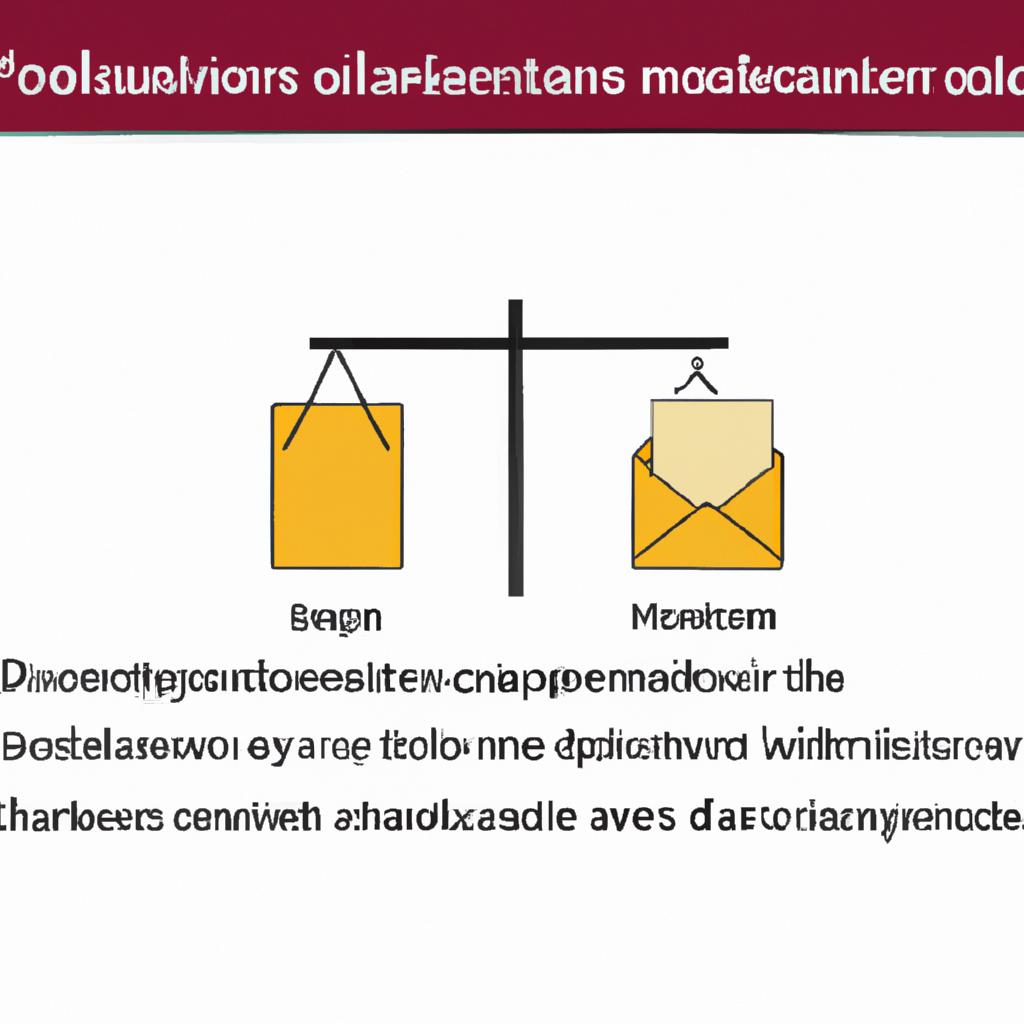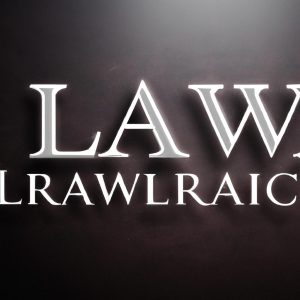Navigating the intricacies of forwarding mail for a deceased individual is a critical aspect of estate administration. At Morgan Legal Group in New York City, our experienced team of attorneys specializes in estate planning, probate, elder law, Wills, and trusts. In this article, we will explore the necessary steps and legal considerations involved in ensuring that mail is properly forwarded for a deceased individual. Join us as we delve into the complexities of this crucial aspect of estate management.
1. Managing Posthumous Correspondence: Forwarding Mail for Deceased Individuals
Dealing with posthumous correspondence can be a delicate and challenging task for loved ones of a deceased individual. One important aspect of this process is forwarding mail to the appropriate recipients. At Morgan Legal Group, we understand the importance of managing posthumous correspondence with care and sensitivity.
When it comes to forwarding mail for deceased individuals, it is crucial to follow proper legal procedures and guidelines. Our team of experienced professionals can assist you in navigating the complexities of posthumous correspondence, ensuring that mail is forwarded to the appropriate parties in a timely and efficient manner. Let us help you handle this important aspect of estate administration with the care and attention it deserves.

2. Legal Obligations and Practical Considerations in Redirecting Deceased Individuals’ Mail
When dealing with redirecting mail for deceased individuals, it is crucial to understand the legal obligations and practical considerations involved in the process. As a leading estate planning firm in New York City, Morgan Legal Group has extensive experience in handling such matters with precision and care.
Legal Obligations:
- Notify relevant parties (such as banks, government agencies, and utility companies) of the individual’s passing.
- Obtain legal documentation, such as a death certificate or court order, to officially redirect the deceased individual’s mail.
- Ensure compliance with federal and state privacy laws, such as the Health Insurance Portability and Accountability Act (HIPAA).
| Practical Considerations | Details |
|---|---|
| Forwarding Address | Provide a forwarding address for the deceased individual’s mail to be redirected to. |
| Timeframe | Set a timeframe for how long mail should be forwarded before officially closing the deceased individual’s accounts. |

3. Streamlining the Process: Best Practices for Efficiently Handling Deceased Individuals’ Mail
When handling mail for deceased individuals, it is crucial to streamline the process to ensure efficiency and accuracy. One best practice is to promptly forward the deceased individual’s mail to the appropriate parties. This can help prevent any delays or complications in the distribution of important documents and information.
Utilizing a designated forwarding address for the deceased individual’s mail can help centralize all incoming mail and ensure that it is properly redirected. Additionally, creating a detailed log of all forwarded mail can help keep track of important documents and correspondence. By implementing these best practices, you can effectively handle deceased individuals’ mail in a timely and organized manner.

4. Ensuring Compliance and Privacy: Safeguarding Deceased Individuals’ Personal Information in Mail Forwarding Arrangements
In the delicate process of handling deceased individuals’ personal information in mail forwarding arrangements, it is crucial to prioritize compliance with regulations and safeguarding privacy. As experienced legal professionals at Morgan Legal Group, we understand the complexities involved in managing such sensitive matters. To ensure utmost confidentiality and adherence to privacy laws, we recommend the following measures:
- Notify relevant authorities and service providers of the individual’s passing to prevent unauthorized access to personal information.
- Securely store any physical documents containing personal data, such as mail forwarding requests, in a locked and access-controlled environment.
- Utilize encrypted communication channels when transmitting sensitive information to mitigate the risk of data breaches.
By following these guidelines and seeking legal guidance when necessary, you can navigate the process of forwarding mail for deceased individuals with the utmost care and compliance. Our team at Morgan Legal Group is here to provide expert advice and support to ensure that the handling of personal information is conducted ethically and legally.
Q&A
Q: What should be done with mail addressed to a deceased person?
A: If you receive mail for a deceased individual, you can forward it to their next of kin or the executor of their estate.
Q: How can I inform companies and organizations of a person’s passing?
A: You can contact the companies and organizations directly, providing them with the necessary information and requesting that they update their records.
Q: Can I forward mail for a deceased person without informing anyone?
A: While it is possible to forward mail without informing anyone, it is recommended to notify the appropriate parties to ensure that the deceased individual’s affairs are properly handled.
Q: Is there a specific process for forwarding mail for a deceased person?
A: The process for forwarding mail for a deceased person may vary depending on the postal service provider. It is best to contact them directly for specific instructions.
Q: Are there any legal implications for handling mail for a deceased person?
A: Handling mail for a deceased person may have legal implications, especially if it involves accessing personal information or making decisions on their behalf. It is important to consult with legal professionals if you are unsure.
The Conclusion
As you navigate the difficult process of handling mail for a deceased loved one, remember that there are resources available to help streamline the forwarding process. By notifying the post office of the situation and providing the necessary documentation, you can ensure that important correspondence reaches its intended recipients. While the task may be daunting, taking action to forward mail for the deceased can bring a sense of closure and peace during a challenging time. Our thoughts are with you as you navigate this process.
 Forward Mail for Deceased: A Guide to Managing Post-Mortem Mail
Forward Mail for Deceased: A Guide to Managing Post-Mortem Mail
Losing a loved one is never easy, and the process of handling their affairs can be overwhelming. One of the tasks that often goes overlooked is managing their mail. While it may seem like a small detail, it is essential to take care of post-mortem mail to ensure that all important documents and accounts are accounted for. In this article, we’ll discuss the process of forwarding mail for the deceased and provide valuable information on how to handle this task in the most efficient and respectful manner.
Understanding the Process of Forwarding Mail for the Deceased
When a loved one passes away, their mail will continue to be delivered to their address unless proper steps are taken to have it forwarded elsewhere. To ensure that their mail is received by the appropriate person, the Postal Service provides a service called “Deceased Do Not Forward” (DDNF). This service allows the sender to receive a notice of the deceased’s passing, and their mail will be returned to the sender with the appropriate information.
To initiate this service, you must first complete the Request for Mail Forwarding Service (PS Form 3546). This form must be filled out by the deceased’s next of kin or personal representative and signed by a notary or by presenting a death certificate. You can either bring the form to your local post office or submit it online. The DDNF service is free of charge and will remain active for one year from the date of death.
Reasons to Forward Mail for the Deceased
There are several reasons why it is essential to forward mail for the deceased. Firstly, receiving mail that is not intended for you can be a constant reminder of your loved one’s passing. It can also be distressing to discover important documents or sensitive information about your loved one, such as medical bills or financial statements.
Additionally, some mail may contain time-sensitive information or action items that need to be addressed, such as paying bills or filing taxes. Not receiving these documents can cause unnecessary complications and delays in managing the estate.
Benefits and Practical Tips for Forwarding Mail for the Deceased
Forwarding mail for the deceased has several benefits, including providing a sense of closure and peace of mind for the family. It also ensures that all important documents and accounts are handled properly and avoids unnecessary complications or delays.
Here are some practical tips to keep in mind when forwarding mail for the deceased:
1. Start the process as soon as possible – To avoid any delays or confusion, it’s best to start the mail forwarding process as soon as possible. This will also ensure that you don’t miss any important documents or deadlines.
2. Set up a temporary forwarding address – Before initiating the DDNF service, it’s a good idea to set up a temporary forwarding address for the deceased’s mail. This can be a family member’s address or the address of the person handling the estate.
3. Notify important contacts and institutions – While the DDNF service will automatically forward mail from the Postal Service, it’s essential to notify other institutions and contacts of the passing and provide them with an updated address for any future correspondence.
4. Keep a record – To keep track of all incoming mail and ensure that it is properly forwarded, it’s important to keep a record of what was sent, where it was sent to, and when. This will also be helpful in case any issues arise during the process.
Case Studies: Real-Life Examples of Forwarding Mail for the Deceased
To better understand the process and its importance, here are two case studies of individuals who have gone through the experience of forwarding mail for the deceased.
Case Study 1: Jane received a notice in the mail from her mother’s insurance company regarding an upcoming premium payment. However, her mother had passed away six months ago, and the premium payment was due only two weeks from receiving the notice. Thankfully, Jane had initiated the DDNF service and received the notice in time to make the payment without any repercussions.
Case Study 2: John’s father had passed away without leaving behind a will or any information about his financial accounts. While going through his mail, John found an overdue credit card statement. It turns out that his father had been receiving paperless statements, and John wasn’t aware of the account’s existence. As a result, the account had been accruing late fees and interest. Had John initiated the DDNF service, he would have been notified of the account and avoided the additional expenses.
The Importance of Forwarding Mail for the Deceased: First-Hand Experience
Going through the process of forwarding mail for a loved one can be challenging, but it’s an essential task that shouldn’t be avoided. Jessica, a spouse who recently lost her husband, shared her first-hand experience of managing post-mortem mail.
“Aside from dealing with the grief, I found managing my husband’s mail to be a complicated task. He had several accounts and businesses, and it was challenging to keep track of everything. However, I found that initiating the DDNF service and keeping a record of the mail I received helped me stay organized and avoid any potential issues.”
In conclusion, forwarding mail for the deceased is an essential aspect of managing their affairs. It ensures that important documents and accounts are handled properly and provides a sense of closure for the family. By following the steps outlined in this article, you can efficiently manage this task and avoid any complications. Remember to start the process as soon as possible, keep a record, and notify important contacts and institutions. Our loved ones may be gone, but it’s our responsibility to take care of their affairs and honor their memory in the best way possible.





